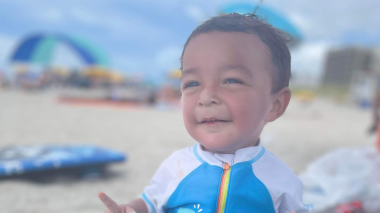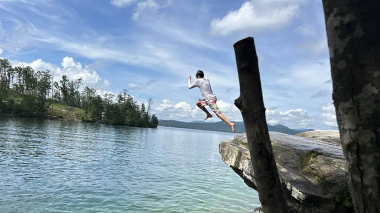It’s summer, which means lots of outdoor playtime for the kids in your life. But when it comes to fun in the sun, protecting children from heat-related illnesses, like heat cramps, heat exhaustion and heatstroke, is essential.
Children are more vulnerable to heat-related illnesses than adults, says Dr. Akilah Grimes, a pediatrician at Atrium Health Levine Children’s Suburban Pediatrics.
“Their body surface area is smaller than adults, which can contribute to heat-related illnesses,” says Grimes. “Also, their bodies do not regulate as well as adults to temperature changes.”
Here are her top tips to help your kids keep their cool in soaring temperatures.
Be strategic about outdoor time
You don’t have to keep the kids inside all summer but be strategic about when they play outdoors. Grimes recommends limiting time outside when the heat index is the highest (usually between 11 a.m. and 4 p.m. but check your local weather). Don’t let them participate in intense physical activities during the hottest part of the day.
Take breaks to cool off
Encourage kids and teens to take breaks indoors and in shaded areas to cool off, particularly if they’re exercising or playing. Teach them to come inside immediately if they feel too hot.
Dress them appropriately
Wearing lighter colors, loose-fitting and sweat-wicking fabrics can help keep your child cooler in hot temps. Don’t forget a hat and sunscreen!
Keep them hydrated
Encourage your child to drink plenty of water or a sports drink with electrolytes, even if they aren’t thirsty. Avoid sugary beverages, like soda and sweet tea, and caffeinated drinks.
Practice car safety
Never leave a child alone in a parked car, even for just a few minutes.
Watch for heat illness symptoms
It’s also essential to know the signs of heat illness, including heat cramps, heat exhaustion and heatstroke.
Heat cramps, the mildest form of heat illness, can cause severe stomach and leg cramps and spasms or tightness in the hands. Most symptoms resolve on their own after a few hours once the child rests and rehydrates.
Signs of heat exhaustion include pale skin, fatigue, weakness, increased thirst, fainting, headache, nausea, vomiting, profuse sweating, muscle cramps, irritability, mild fever (100 to 102 degrees) and cool, clammy skin. If your child has mild symptoms (such as dizziness), you can treat symptoms at home (see tips below). If their symptoms are more severe, contact their pediatrician.
Symptoms of heatstroke, the most dangerous heat-related illness, can include confusion, fast breathing, rapid heartbeat, severe headache, dizziness, weakness, passing out, little or no sweating, body temperature over 105 degrees and flushed skin that’s hot and dry. Heat stroke is a medical emergency and can be deadly. If someone exhibits these symptoms, call 911 or go to your nearest emergency department immediately.
How to treat symptoms of heat illness in children
If your child has symptoms of heat exhaustion or if you’re waiting for help to arrive for a child with heatstroke symptoms, it’s important to bring them indoors or somewhere cool, undress them, place cool washcloths on their skin, give them sips of cool water if they’re conscious and have them lie down and elevate their feet slightly. If they’re vomiting, make sure they’re lying on their side to prevent choking.
While heat illness in children can be scary, there are many ways you can help keep your kids safe. And if they ever need help, contact your pediatrician, visit your nearest emergency department or call 911.
Find an Atrium Health Levine Children’s pediatrician near you.



